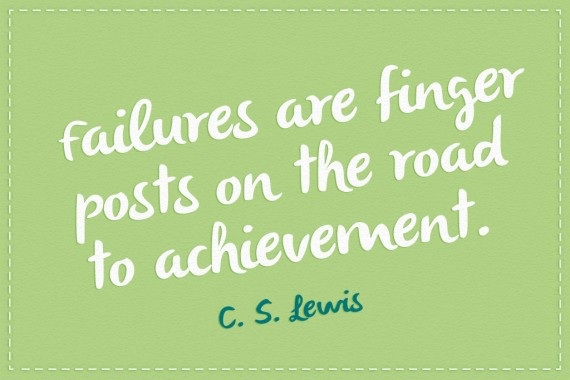Menu
It's time to chase Innovation instead of reacting to the status quo.
-Taylor Williams
|
Teaching is a funny beast. As teachers we strive to connect with our students on so many levels, helping them to connect and achieve more in regards to our subjects. We are driven by standards, objectives, state and national policies on education as well as balancing standarized tests with our own curriculum that we have to trim and fit each year. Now, the Maker Movement, STEM or STEAM, 1:1, Educational Technology, and so many other initiative and strategies are constantly on the tips of our tongues as we are "looking to the future" of education. But I am a teacher...right now What can I do? ConsumerismWhen you think about your classroom, ask yourself: -Are you spending the entire time lecturing? -Do students have a voice in what or how they learn? -Are they able to speak into your planning or are you bestowing your vast knowledge on the subject at hand? -Do you require your students to memorize the review sheet and then vomit the facts back on the page? If you answered yes-- Your students are consumers. The tough part about this concept is that WE were brought up in a system that educated us in a consumerist classroom. Sure, technologies altered how classes were run, but for the most part information was listed, notes were taken, memorized and then vomited back out to show understanding. Is that learning? I guess I can't completely discount the process because I came out alright. But what more could come from the information that I was coming in contact with if I was encouraged to be a producer rather than a consumer? Your classroom, like the system can't change overnight, but here are 5 tips that can move you into a more producer centered classroom. 1. Assess your assessmentsTake some time to look through the assessments that you have created for one of your units. Dissect them. What are you assessing? How is your assessment encouraging creativity? Is the result of your assessment allowing the students to use their creativity and their ability to produce information based on their learning? We want to challenge our students to put the information they are learning to work. Think of practical activities, projects or even scenario questions that could allow for students to build practical connections. 2. Give your students some ownership Do you allow your students to give input on your assessments? Do you differentiate in a way that enables students to become creatives? Is there enough wiggle room in your schedule for students to risk everything, fail and rebuild? I am finding that it is becoming more and more important for students (and teachers) to have input on their learning. If there is not an interest or buy in from the students, they won't connect as well. Let their curiosity guide them (and your class) at certain points. Take a look at your objectives. How could you re-create an assessment that would allow for students to have input, to produce something that demonstrates their mastery of the topic? 3. See what other's are doing picture from Edpuzzle.com picture from Edpuzzle.com The first piece of professional development advice that I was given was "go observe the teacher next door". Even though I was teaching math and she was teaching humanities, I was encouraged to watch her. She had been teaching much longer than I had and she was a master at her craft. Her lessons were engaging, challenging, and objective driven. That being said, she was very much offering a consumer centered lesson. Since that advice, I have started to connect with educators about the innovations that they are bringing into their subjects. Though I might not be familiar with the objectives and lessons in a biology class, the use of Edpuzzle in their lesson provided me with some inspiration of assessing my students using videos. If a teacher is integrating PBL (project based learning) into their classroom, investigate. How are their standards being met WITHOUT doing a formal test? What are they using to collect the projects? Ask questions, build connections. Twitter has been my number one Pro-D connection for innovations and finding ideas for a producer based classroom. Check it out! 4. Fiddle with your approach I remember when I was younger, playing games like Legend of Zelda or Super Mario 3 on my Super Nintendo and I would seem to find myself getting to certain areas, or bosses in the game and I would get stuck. At first it was just an accomplishment to get that far, so losing to the boss wasn't that big of a deal. As time went on though, losing to the boss became frustrating and made me turn away from the game. That is until my brother would come sit next to me, and say "Hey instead of jumping over him, why don't you run underneath when he jumps up?" My pride would boil like a pot of water, long forgotten on the stove set on high and rolling hot liquid across the kitchen. Why didn't I think of that! Sometimes, we need a perspective change, an opportunity to fiddle with our approach to allow ourselves to see an opportunity that we had not seen before. What did I do? I committed to a week of recording myself during the same block. I explained to my students that I was doing this to help be a better teacher and learn more about me. Over the span of the week I notice a few smaller trends that i was doing and one large change that needed to happen to help my students be better learners. The point is that if I want my students to continually strive to assess themselves, learn how to find new paths, and figure out different perspectives, I should be modeling that for them as well. 5. Allow yourself to FailMy biggest flaw in my teaching, my one regret in my experience as a student is I was never one to try to fail. I wasn't the risk taker. I wasn't the one thinking outside the box in a way that would change me. I have had to learn how to fail. To try and fail and try again and fail again.
Obviously from the title of my blog, I'm an advocate for failing. It hurts. It's hard. It's not so fun. But it's the best way to learn! If we want our students to be producers, they must be willing and ready to fail with the understanding that a failure is a step forward. Be the example. Show them how to fail in order to learn more. Produces opportunities for failure that will build opportunities of growth. Below is some inspiration to build you up as you try to fail!
0 Comments
Leave a Reply. |
About TaylorTaylor currently serves as a Coordinator of Innovative Learning for a mid-sized school district in Texas. He is a speaker, writer, and coach for all who are in conflict with the status quo. Archives
March 2023
|






